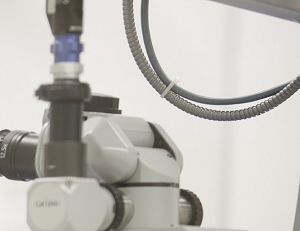What is Canthopexy - Definition, Procedure, Lateral Canthopexy, Left Lateral Canthopexy
Canthopexy is a technique that is used to tighten the lower eyelid, and it is typically performed in conjunction with lower lid blepharoplasty. It can also be accomplished independently on elderly patients with extremely droopy lower eyelids. A canthopexy is a technique that can be done independently, but when combined with blepharoplasty, the results are excellent.
These techniques serve to strengthen the lower eyelid. The lower eyelid's shape or position can be improved, it can be tightened if it is slack or sagging, or a dislocated lateral canthal tendon can be reattached.
A lateral canthopexy involves the use of stitches to support or sustain the outer junction of the lower eyelid. This is accomplished without cutting the angle of the outer eyelid or the lateral canthal tendon. The eyelid structures remain mostly unchanged; instead, they are simply pulled together more tightly. Canthopexy, in theory, reduces the danger of a rounded outer eyelid angle.
Canthopexy Definition
A canthopexy is a simple surgical operation that reinforces and stabilizes the lateral canthal tendon and associated lower eyelid interior components. This surgical treatment repositions the outer eye corner where the lids meet to restore a young, elevated appearance to the eye.

Canthopexy Procedure
A small amount of local anesthetic is injected beneath the skin of the eyelid to numb the region. Below the outer corner of the eye, an incision is made that extends into a skin fold and then under the eyelash line.
Typically, the length of this incision is between 1 to 2 cm. The eyelid muscle known as the orbicularis oculus is dissected in order to reveal a portion of the lower eyelid tarsus, which is a connective tissue structural plate of the eyelid, as well as the bony layer known as the periosteum near the outer orbital rim.
The tarsus is fastened and moved closer to the bony rim with stitches (often permanent material). An extra stitch is used to close the skin incision.
Lateral Canthopexy
Lateral canthopexy is used when the lower lid position needs to be adjusted after a previous blepharoplasty in order to decrease the palpebral fissure and add stability to the raised lower lid margin. With titanium wire suture, both ends of the lateral canthus are brought together through the side of the lower blepharoplasty cut. When performing a post-blepharoplasty procedure on a patient, if the patient has developed scarring that restricts the upward mobility of the lateral canthus, the needle tip electrocautery is used to incise the lateral third of the middle lamellae.
A lateral canthopexy can restore an eyelid's young appearance and function, as well as decrease the likelihood of lower lid malposition and scleral show. It is now an essential component of a lower lid blepharoplasty and midface lift. More people are realizing that successful canthopexies are almost always necessary for lower lid surgery to produce good, long-lasting surgical results.
Left Lateral Canthopexy
People who have a negative tilt in both eyes, a vertical constriction of the midlamella, and a horizontal extension of the left side of the lid typically undergo left lateral canthopexy.
 Reviewed by Simon Albert
on
October 27, 2022
Rating:
Reviewed by Simon Albert
on
October 27, 2022
Rating:











